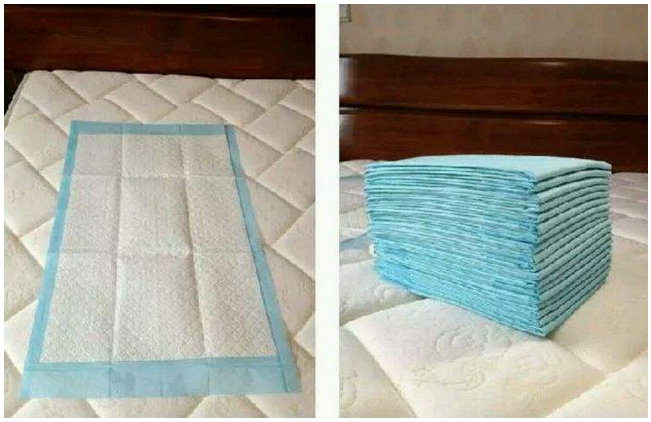One, the advantages of no-tillage wheat No-till wheat, also known as rice buckwheat in our province. Compared to plowing wheat, no-till wheat has the following advantages: 1, the provincial labor saving section. No-tillage wheat employs 10.5 workers per mu, which saves 4 workers compared to cultivating plough wheat and reduces production costs. 2, No-tillage wheat does not misuse agriculture, rush to season sowing, make full use of the year's light and temperature resources, lay a solid foundation for the seedlings. 3, no-tillage wheat does not indiscriminate soil layer, fertilizer and soil in the topsoil, soil water, gas and heat conditions in the early growth period is better than ploughing wheat, which is favorable for seedling growth, promote early tillering, increase the number of low tillers, improve the rate of spike formation, It is beneficial to increase the number of effective panicles and increase production. Second, no-till wheat high-yield cultivation techniques 1. Select high-yield and disease-resistant varieties. In North Zhejiang, Yangmai 158 and Yangmai 12 varieties were selected, and Wenmai 10 and other varieties were selected in Zhejiang and southern Zhejiang. 2, appropriate enough time sowing. The water is cut off 7 days before the rice is harvested to ensure that the soil after the late rice harvest is sufficient to create conditions for timely planting of the wheat. After harvesting the late rice Qi mud, cut high and fill in the ground to straighten the field surface. In northern Zhejiang, the seeds are planted from late October to early November; wheat is planted in mid-and-mid-November in central and southern Zhejiang. When appropriate sowing of wheat, the sowing rate per acre is 7.5 ~ 10kg, if the late sowing is appropriate to increase the amount of seed. Sowing should be uniform, to prevent the emergence of clumps, while at the same time to be evenly spread to the edge. 3, timely ditch coverage. After the sowing of wheat, it should be covered in time. Advocate mechanical trenching, generally 2m trench, 20cm trench width, 20cm trench depth, try to improve land utilization. Gully to be evenly covered in the gutter surface, cover the thickness of 2cm, eliminate the dew. Do a good job in the field "three channels" (gutter, waist ditch, Tianbian ditch) matching, gully groove to reach the rain to ditch dry. 4, straw returned. The return of straw to the field has the function of protecting the weeds, inhibiting weeds, and increasing the organic matter of the soil, which is beneficial to increasing the yield of wheat and avoiding the environmental pollution caused by burning. Coverage of wheat after sowing or cover before wintering can be uniform covering 300kg of straw per acre, with grass not piles, field is not exposed soil is appropriate. 5, chemical weeding (1) Killing rice field weeds before sowing. 2 days before sowing, 10% glyphosate 300ml or 20% grams per acre 100ml, watering 40kg spraying, blocking weeds in rice fields. (2) Chemical weeding at the seedling stage. Weed 2 leaves 1 before the heart period, per acre with 50% isopropenol 150 grams or 6.9% of the gel 50g of humic gum, watered 40kg even spray to control. 6, scientific fertilization. The yield per mu of 250-350kg is 11-13kg of pure nitrogen, 5-6kg of phosphorus pentoxide, 4-6kg of potassium oxide, and 1000kg of high-quality farmyard fertilizer. Organic fertilizer, phosphate fertilizer, and potash fertilizer are all used as base fertilizers. 60% of the total amount of nitrogen fertilizer is used as base fertilizer, 10%-15% is used as seedling fertilizer, and 25-30% is used as panicle fertilizer. 7, control of pests and diseases. In the wheat flowering stage, 70% thiophanate-methyl WP 100g or 50% carbendazim WP 80g per mu was sprayed to prevent Fusarium head blight. When 100 strains of maggots reach 800-1000 heads, they are sprayed with 10% imidacloprid WP 20g and 30kg per acre. 8. timely harvest. The suitable harvest period for manual harvesting is the wax ripening period, and the suitable harvest period for the combine harvester is the late wax ripening period.
Underpad Detailed introduction:
Our underpad are widely used for hospital bed, infant bed, wheelchair, operating table
etc., protect patients, the elder and infants against body fluids contamination.
1) Underpad super absorbent layer:
fluff fiber mixed with highly absorbent polymers draw in and condense all moisture instantly and sufficiently, preventing from flowing back and leakage.
soft and breathable underpad.
3) Underpad with fine vents
to prevent from flowing back and keeps the skin dry and comfortable.
.No matter in the tissue paper or the PE film,we can printpictures or wetness indicator as your request
Suitable length and width of underpad
Large size underpad is ideal for overnight use and very heavy incontinence and big surgical operation; Extra-large underpad cover the sleeping area for superior bed linen protection.
Prevent leakage; keep skin dry, hygiene and comfortable; Protect bed cleanliness and control
odor effectively, Our maximum underpad size can be made in 140x80cm now.
PRODUCTS SHOW:
PRODUCTION AND SHIPPING
Adult Underpad,Adult Medical Underpad,Washable Underpad,Disposable Adult Underpad Tianjin Jiao rou Sanitary product company , http://www.tjsanitary.com
Hospital Medical Disposable Underpad Manufacturer
size
cover
bottom
bottom sticker
SAP
Pad weight
piece/pack
packs/bag
bags/40HQ
45x60cm
non woven
PE film
without
1.5g
35g/piece
10
10
2000
60x60cm
non woven
PE film
without
2g
45g/piece
10
10
1650
60x90cm
non woven
PE film
without
3g
50g/piece
10
10
1100
80x140cm
non woven
PE film
without
4h
60g/piece
10
10
950
2) Non-woven surface,
4) Underpad with print design



No-till Wheat High Yield Cultivation Technique
